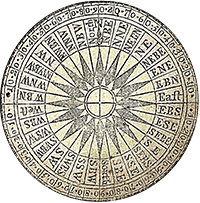One of the first Indian attacks on the Virginia colonists occurred in 1609. The results were gruesome. Many of you that are familiar with Virginia history recall that the “Starving Time at Jamestown” occurred during the winter of 1609-1610.

During this ambush, Ratcliffe was captured by the Powhatan and was taken to their village to suffer a particularly gruesome fate. He was tied to a stake in front of a fire and flayed by women of the tribe with mussel shells, with pieces of his skin tossed into the flames as he watched. The account of his death was relayed by the surviving Captain William Phettiplace, and recorded by George Percy, a colonial official.
Trade with the Indians had been essential for the colony’s survival. The lack of trade resulted in desperate measures. There are accounts of cannibalism. Percy also recorded that during the food crisis, “that the living dug up and ate corpses, and that a husband killed his wife and then butchered her, preserved her with salt, and ate parts of her before he was caught.” The husband was subsequently executed.
William Kelso, the definitive Jamestown expert on this era, notes that dead settlers and one Indian who had died in a fight, were eaten.
You may also recall an account of cannibalism was confirmed in 2013. Kelso tells of a teenage girl of about fourteen years had recently immigrated from southern England. The girl’s remains were forensically analyzed and shown to have telltale marks consistent with butchering meat. The excavators found the girl’s skull and leg bones, together with bones of “butchered horses and dogs” in a “trash deposit” in an underground room that had been used as a kitchen at that time. According to the forensic evidence, cuts made to the skull and bones clearly indicate that brain and edible tissue had been separated from the bones in the same way as with butchered animals, providing “clear evidence of cannibalism.”
In 1610, relief from the survivors of the vessel “Sea Venture” finally arrived at Jamestown after being shipwrecked at in Bermuda. Sir Thomas Gates and Sir George Somers, the group’s leaders, assumed they would find a thriving colony in Virginia. Instead, they found the colony in ruins and practically abandoned. Of the 500 colonists living in Jamestown in autumn, they found just 60 survivors. To complicate matters, many of the supplies intended for Jamestown had been lost in the shipwreck at Bermuda. Because they expected to find a thriving colony, Gates and Somers had only brought a small food supply with them.
Historian Ginny Gotlieb tells us that Gates made the decision to abandon the colony. The Jamestown survivors boarded his ship and on June 7, 1610, headed down the James River. By chance or providence, the following afternoon they were met by Lord De La Warr’s expedition and ordered to return to Jamestown. As John Smith later wrote, “God… would not have it [the colony] so abandoned.”
I have had the good fortune to see an archeological dig at Jamestown, to visit the ground where the fort stood, and visit the remains of the 17th century church tower. While these sites are marvelous historic treasures, the Jamestown colonists horrific survival story is not easily forgotten.
Welcome to “Sharing the Stories of History with Tim Mann”!
Meet Timothy A. Mann, a passionate historian born and raised in the heart of Shelby County, Ohio where Tim’s roots run deep in the rich soil of American history. As the author of articles and books, including “Frontier Miscellany Concerning the Miami County Ohio Militia,” “Colonel John Mann, His Kith and Kin,” and “Frontier Militia – The War of 1812,” Tim’s literary contributions have enlightened and inspired countless history enthusiasts.
Join Tim Mann on a journey through time as he shares fascinating tales, untold stories, and hidden gems from the annals of history. Let’s delve into the past together and uncover the wonders that await in “Sharing the Stories of History with Tim Mann.”




